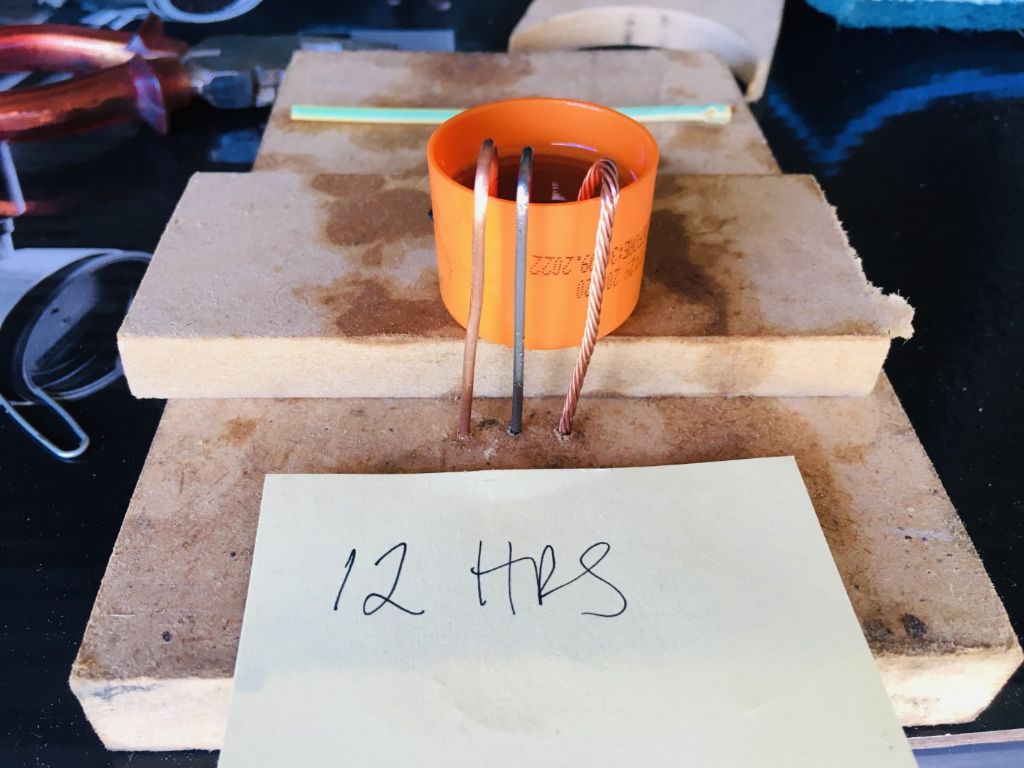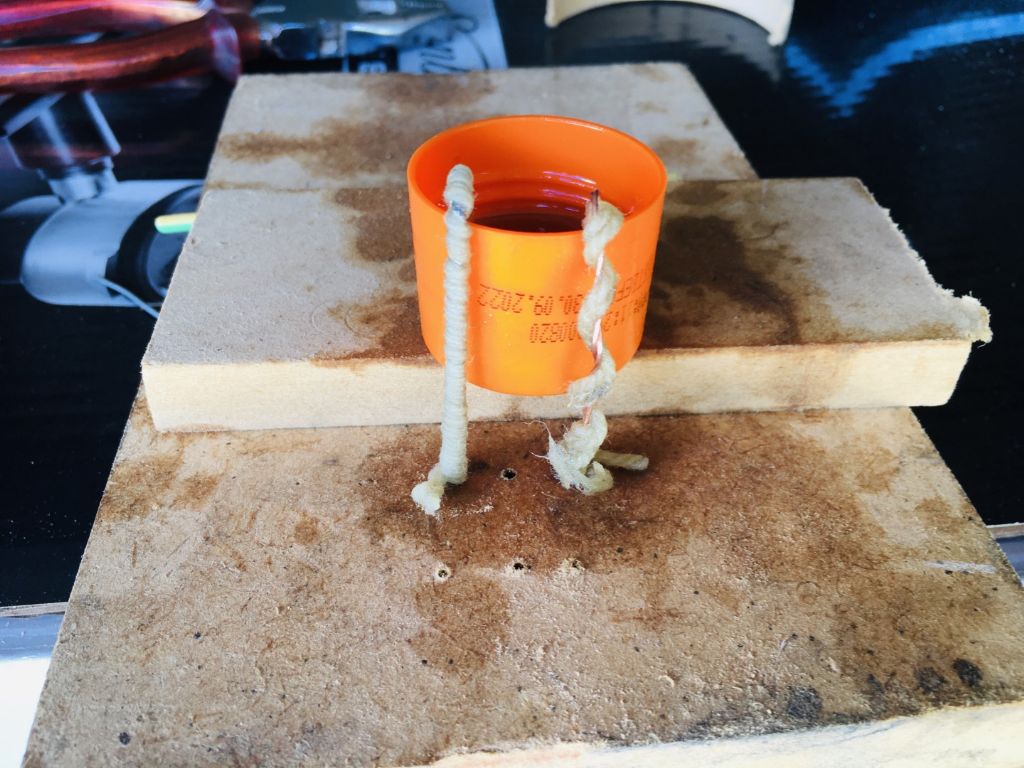I did a couple of other experiments to test some of the theories that were posted.
Lifting by capillary action and syphoning.
I suspect the syphon is broken because the two wire examples touch the container lip. It isn't broken in the multi-strand wicks because the outer threads are lifted over the edge. If so, the single wires might work if they were held by a firm base that hooked them clean over the lip.
Possibly the viscosity, weight and how well the oil sticks to the wire matter too. Could be a lighter oil on a different surface would be OK
My test does not use a tube on the inside of the oil pot and I don't believe it is a syphon action that lifts the oil. On some large engines the tube is 1/8"-1/4" diameter and 2"-3" high and open to air at the top. Somehow, the oil has to be raised by the wick on the outside of the tube
The test below has the wicks held at the base and hooked over the lip without touching the cup. The 1st is solid copper wire, the second plain steel with no coating on its surface and the 3rd is multi strand copper wire (from electrical cable).
Lighter (hydraulic) oil was used this time for the test and each wire coated with it to wet its surface.
Sfter 12 hours nothing happened.

In this test the first wick used a solid steel wire wrapped tightly with wool yarn..
We don't have worsted wool in Australia and I used a local lambs wool knitting yarn. ( Worsted is a high-quality type of wool yarn. It is named after the small English village of Worstead, in the county of Norfolk)
The second wick is one strand of the copper electrical wire, bent in half to make a small loop and twisted together. The wool passed thru the loop and roughly wound around the twisted copper wire. (this is how I make wicks for our full size traction engines)
Both of these transfered a similar amount of oil.

Oldiron.







